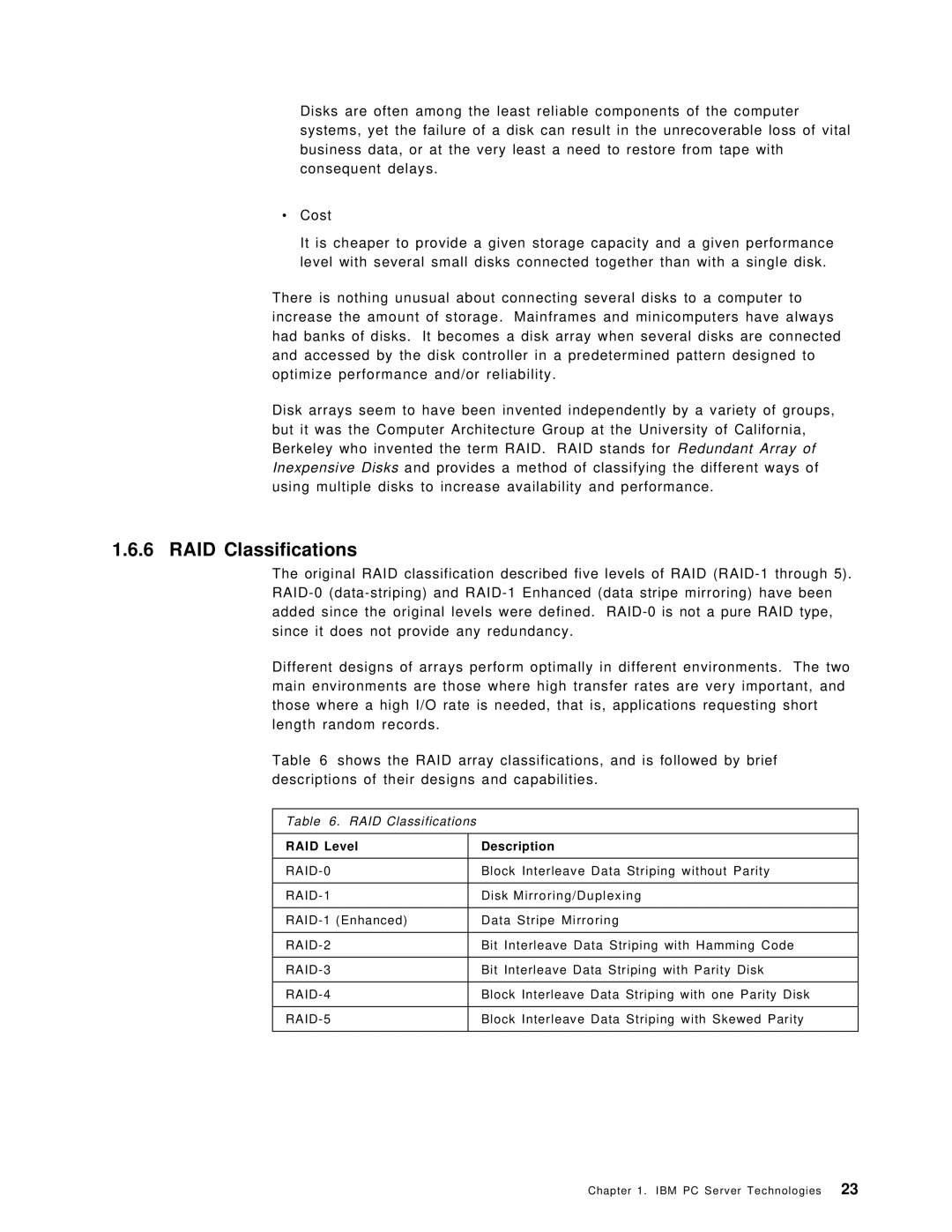
Disks are often among the least reliable components of the computer systems, yet the failure of a disk can result in the unrecoverable loss of vital business data, or at the very least a need to restore from tape with consequent delays.
∙Cost
It is cheaper to provide a given storage capacity and a given performance level with several small disks connected together than with a single disk.
There is nothing unusual about connecting several disks to a computer to increase the amount of storage. Mainframes and minicomputers have always had banks of disks. It becomes a disk array when several disks are connected and accessed by the disk controller in a predetermined pattern designed to optimize performance and/or reliability.
Disk arrays seem to have been invented independently by a variety of groups, but it was the Computer Architecture Group at the University of California, Berkeley who invented the term RAID. RAID stands for Redundant Array of Inexpensive Disks and provides a method of classifying the different ways of using multiple disks to increase availability and performance.
1.6.6 RAID Classifications
The original RAID classification described five levels of RAID
Different designs of arrays perform optimally in different environments. The two main environments are those where high transfer rates are very important, and those where a high I/O rate is needed, that is, applications requesting short length random records.
Table 6 shows the RAID array classifications, and is followed by brief descriptions of their designs and capabilities.
Table 6. RAID Classifications
RAID Level | Description |
|
|
Block Interleave Data Striping without Parity | |
|
|
Disk Mirroring/Duplexing | |
|
|
Data Stripe Mirroring | |
|
|
Bit Interleave Data Striping with Hamming Code | |
|
|
Bit Interleave Data Striping with Parity Disk | |
|
|
Block Interleave Data Striping with one Parity Disk | |
|
|
Block Interleave Data Striping with Skewed Parity | |
|
|
Chapter 1. IBM PC Server Technologies 23
